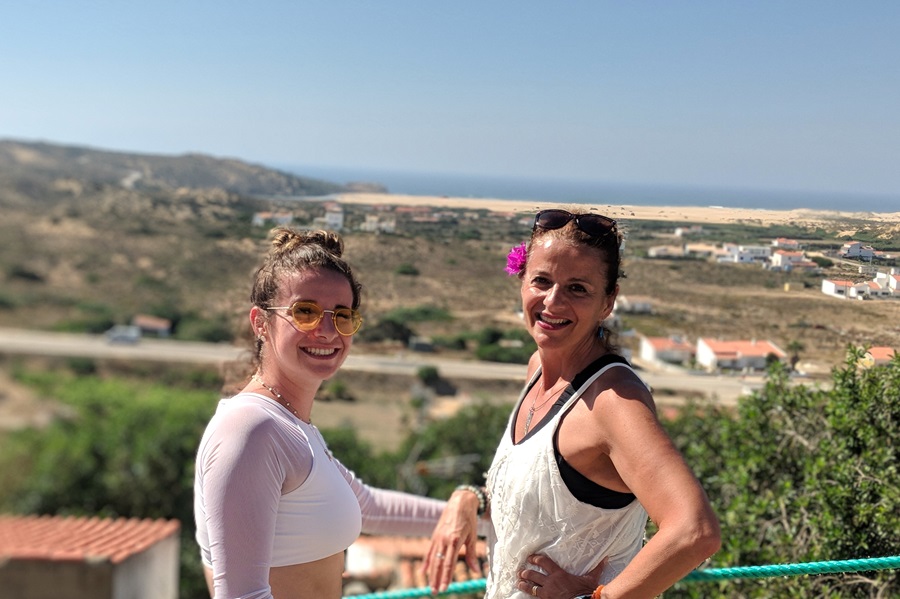Time have changed. So has wellness travel
Having escaped the confines of the spa, wellness now influences the travel experience far and wide, offering new ways to discover the world
Photo: Daughter and mother Julia and Loredana Wainwright in Lagos, Portugal
VACATIONS AREN’T ALWAYS as relaxing as they should be. For one thing, we can’t seem to stop working: around two-thirds of Canadians admit to working on vacation, a survey found earlier this year.
Click here to view this story in magazine format
And then, even if you can disconnect from your email for a week, there’s all the other stressors — flights, bookings, itineraries, luggage. By the time you get back, it’s no surprise that many people report feeling more stressed than before they left.
Loredana Wainwright is a yoga instructor and wellness retreat planner who operates Retreats with Loredana. She believes these kinds of things are forcing people to rethink how and where they plan their vacations.
Story Continues Below
“That’s not a way to recharge or re-energize,” she says of the stress and anxiety that can often engulf a vacation.
Enter the wellness retreat. “These wellness retreats offer you alternatives to work,” Wainwright explains. “They offer you the true essence of retreat and repair — repairing the mind, repairing the heart, maybe repairing where you want to be in the world.”
Wellness tourism — a term that generally refers to travel experiences curated around personal wellness, be that physical, mental or spiritual — has been growing rapidly over the past decade into an (U.S.) $880-billion industry in 2023. That growth is expected to continue, with one projection suggesting it could reach $2.3 trillion over the next 10 ten years.
When Wainwright broke into the industry with her first retreat to Italy in 2017, she recalls with a laugh that it was “a bit of an accident.” She had started taking trips that incorporated yoga sessions and became interested in the phenomenon of ‘blue zones’ — areas of the world where people seem to live longer and healthier lives.
“I think tourism suppliers are waking up to the notion that there is expertise that provides wellbeing in a way that can be partnered with travel. I see more partnerships happening” —Loredana Wainwright
“What are those characteristics? And how can we replicate those in other retreats around the world, in places where people really want to go?” she started to ask herself. “Someone said to me, ‘Why don’t you plan your own retreat?’ I [didn’t] know if I could do that — but fast forward eight years, I’m doing it in full-force.”
In a typical year, Wainwright says she will aim for five retreats. Most revolve around these blue zones — destinations like Costa Rica, Italy and Portugal — but she also runs retreats closer to home, in places like Killarney in Northern Ontario or the shores of Lake Erie.
Wainwright says her role in the process is not to act as the travel agent, but to be the wellness expert who curates activities and leads the group through experiences.
“It can be anything, from going to a location where they have yoga to an adventure retreat to hiking Machu Picchu — but always incorporating mindfulness and wellness as well,” she says. “My retreats usually have excursions that involve water, whether it’s a sailboat excursion or nice trip to an island. Every part of the excursion is curated to tap into some part of your wellness and wellbeing in a deeper way.”

In terms of her target market, Wainwright says a lot of her clients are in their 40s and 50s — people who might be looking for ways to bring wellness into busy lives filled with work and children. But there are plenty of additional age groups as well. “I’ve had retreats where mothers and daughters come together,” she says. “It’s phenomenal to see that intergenerational experience.”
With a growing interest in health- and wellness-driven travel, the industry is also seeing growth in strategic partnerships. For an upcoming retreat, Wainwright is partnering with Air Canada Vacations, Goodlife Fitness and two other fitness and wellness influencers to curate a wellness retreat in Antigua in early 2024.
In some ways, she says, these evolving partnerships are a bit of validation for her line of work. Wellness retreats have traditionally been independently planned and run, often by wellness influencers working with individual resorts. Now, more and more traditional tourism operators are reaching out.
Story Continues Below
“I think tourism suppliers are waking up to the notion that there is expertise that provides wellbeing in a way that can be partnered with travel,” Wainwright says. “I see more partnerships happening. It’s a specific kind of skill, curating experiences for wellness.”
To the curious, Wainwright encourages people to give wellness travel a try — or at least to think more purposefully about your own wellbeing on vacation. The results may surprise you, she says.
“You don’t realize how much rest and repair goes on when you really focus on rest and repair.” ![]() Kieran Delamont
Kieran Delamont

